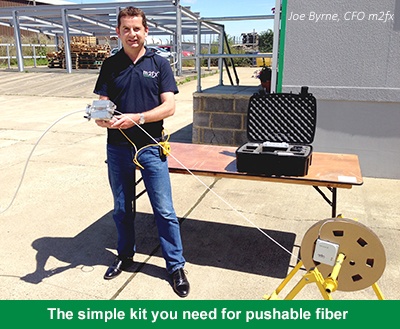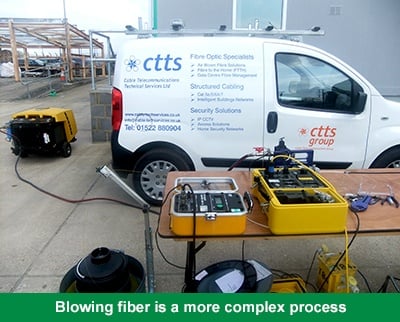 Superfast broadband brings highly desirable benefits across the board, but complexities in the last drop can often introduce unwelcome expense and hamper progress.
Superfast broadband brings highly desirable benefits across the board, but complexities in the last drop can often introduce unwelcome expense and hamper progress.
In a previous post I looked at the roll out of FTTH in Africa and how high costs, in the short term at least, concentrate access within a narrow group that can afford to pay for installations. And, of course, the major prize and the bigger picture will be found in bringing access to much wider markets.
So the question remains; how can network designers reduce their FTTX roll out costs and bring those benefits home for a much wider demographic?
Step 1: Take time and research your options
If you have a big deployment and the job to deliver it, don’t rush straight in. FTTX is a young technology and there are multiple options with no accepted norm as things stand. As previously mentioned, with elite subscribers the choice of installation method was not so important so long as it worked. But as the technology matures and costs reduce, the option you choose becomes more important as you target the mass market and lower price points need to be met.
In a world before the Internet we built knowledge and researched options by talking to local peers. But today, that experience is available from a global network of peers who are grappling with the same issues and overcoming similar problems, so make sure you inform yourself with the latest thinking and best practice before you make any decisions.
Step 2: Develop a solid plan for people, equipment and finance
Once your approach is straight it’s time to build a plan and ensure you have the right resource.
- People. Your team is key. Employing new techniques for the first time can require experienced talent with the flexibility to handle unforeseen problems. But some newer techniques have lowered the required skill levels, increasing the pool of available labor and lowering the technical risks. An experienced install manager will reduce any delays in dealing with the inevitable glitches associated with complex, real-world deployments.
- Equipment. If you’ve got the personnel overhead they’ll need the tools to do the job right. However, equipment for more traditional installation techniques (such as splice fusion units or compressors) can add significant costs. So consideration of techniques like pushable fiber with lower equipment costs can save you money. They can also increase deployment speeds, so labor and capital is tied up for shorter periods, reducing the installation cost per unit.
- Finance. Confidence on timescales creates efficiency in capital expenditure. The better your planning the lower the likelihood of delays and the more certain you can be of when your work will generate positive cash flows. Good planning allows you to be more ambitious with the scale of your roll out ambitions.
Irrespective of how good your plan is however, it is prudent to make provisions for the unexpected. You never know what it is until it happens; so giving yourself the flexibility to ride the bumps when they come is always advisable.
 Step 3: Ensure well considered procurement
Step 3: Ensure well considered procurement
Make sure the product set you’ve chosen is fit for purpose. Buying just on price may be a false economy. You can prevent avoidable setbacks by careful consideration of the full picture rather than just one element of an end-to-end process.
Unfortunately the market is littered with network designers who procured cheap product only to see major delays to the roll out schedule. Ultimately, it is the overall cost of procurement, equipment and labor that affects your bottom line so any procurement decision that leads to higher labor or equipment costs needs careful consideration. But hold back on major procurement until you have carried out Step 4.
Step 4: It’s important to validate your plan
On a large deployment you’d be well advised to consider a trial or a dry run. But be sure to use a real life scenario (not a mock up yard). Like a dress rehearsal, this allows you to stress test your plans on a smaller scale.
If possible, conduct back-to-back trials across each shortlisted solution. Which technique worked best within the architecture? Did you use the amount of materials you expected? Which technique delivered the best overall performance? Are there refinements in the elected solution that can be passed to the wider team? Does the finance still add up?
Step 5: Have strength in your convictions and follow through
Only move to final procurement after Step 4 is complete. After thorough planning and a rigorous trial, you can be confident that you’ll be using the best available techniques, as you’ve proved it to yourself and team.
Now you can invest in the ideal product for the job, confident in a due diligence process that will stand up to scrutiny. With the right product, labor and equipment any issues should be minimized.
In summary, planning, using best practice and implementing in the best possible way will continue to drive down the cost of FTTX roll outs. We are repeating a maturity cycle that has been seen many times in other technologies. Sharing knowledge will help speed the adoption of FTTX and ensure we can all reach the wider market.


